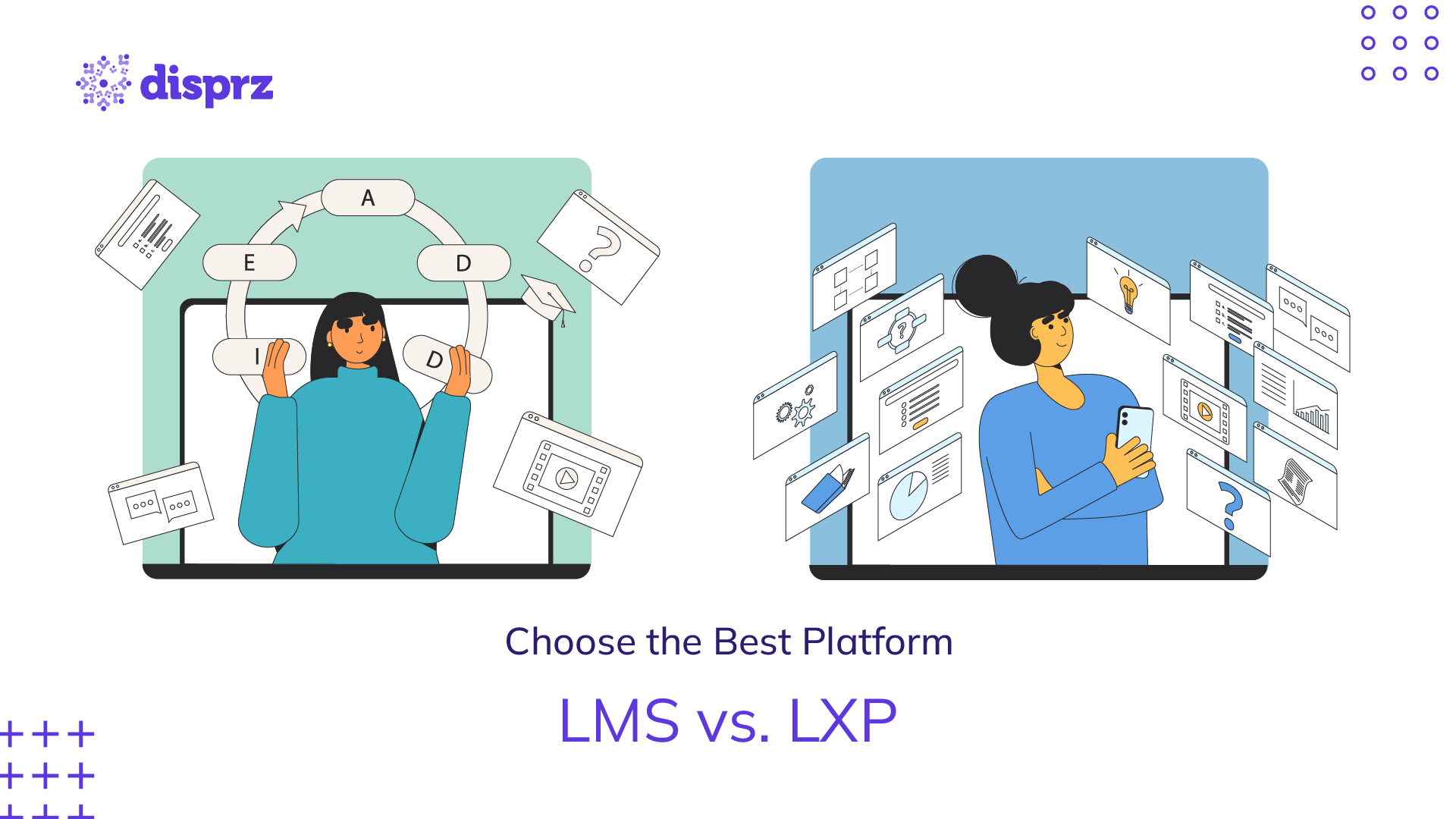According to a recent research report; the global Learning Experience Platform (LXP) Market in 2020 was approximately USD 508.5 Million. The market is expected to surge at a CAGR of 25.3% and is anticipated to surpass USD 2186.4 Million by 2026.
As businesses strive to empower their workforce with up-to-the-minute skills and knowledge, the discussion surrounding the optimal platform has gained immense significance.
Therefore, let’s understand how LMS and LXP significantly helped organizations with better employee training, skilling, and overall development. And, how LXP and LMS differ and cater to different requirements within organizations. Most importantly, which learning platform is best suited for your organization?
In this article, we’ll present an accurate comparison of the two to help you make an informed decision.
What is a Learning Management System (LMS)?
A learning management system (LMS) is software for administering, tracking, and delivering educational courses or training programs.
Typically, the administrator lays out a learning path in an LMS platform. The learners follow the prescribed content, complete each milestone, and take assessments. The administrator tracks the learners’ progress and the effectiveness of their learning materials. The learners are then given certificates based on their performance.
Key Highlights of an LMS
-
Admin interface to build and streamline learning materials
-
Data-centric
-
Single platform to manage all learning courses
-
Seamlessly drives mandatory courses
-
Measures learning outcomes
-
Provides extensive certification options
An LMS is a great tool when you want the learners to follow the path you’ve decided for them.
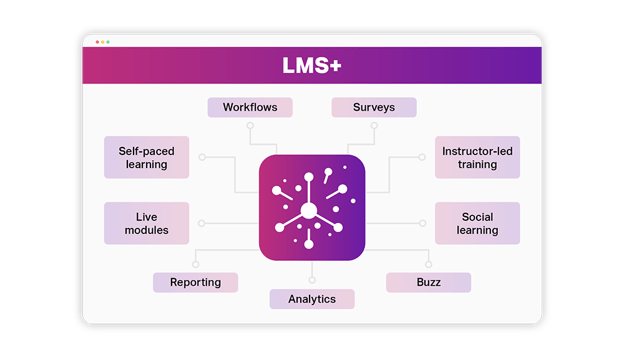
But will that capture the learners’ interest? Will they willingly complete the courses you’ve designed for them? Is this one-size-fits-all approach effective?
As an organization, you might be aware of the fact that each employee is different with unique skill gaps.
To address these varying needs of individual employees, organizations are harnessing the power of a Learning Experience Platform instead.
What is a Learning Experience Platform (LXP)?
A learning experience platform (LXP) is software that provides personalized, continuous learning through various content formats, enhancing the user's educational experience.
Powered by AI, the LXP adapts to each individual’s unique learning needs. Employees can advance their personal development in the ways that work best for them. They can develop vital business skills conveniently and easily — and at their own pace. Learning is personalized to each individual’s goals.
Through the LXP, employees track their proficiency levels and identify the skills they’re missing. Not only that, the platform can bring managers into the flow of learning. Managers can easily monitor the employee learning journey and step in to provide real-time feedback. So it’s a win-win situation for both.
From onboarding new employees to upskilling or reskilling, an LXP fits best in every aspect to optimize learning and development.
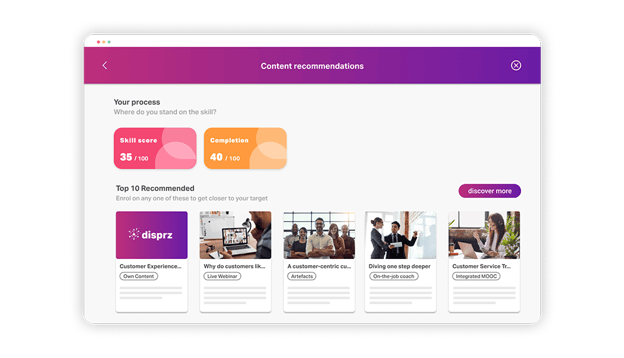
Key Highlights of LXP
-
Powered with AI
-
Ensures actionable learning recommendations
-
Caters to individual needs through personalization
-
Enables collaboration with peers through social learning
-
Provides advanced analytics to improve learning and development
-
Deep skilling to meet organizational goals
-
Gamification for higher engagement
-
Role-based journeys
-
Skill scoring for 360-degree assessments
Key Difference between LMS vs LXP
HR managers need to recognize the fundamental distinction between LMS and LXP. While an LMS is primarily designed to manage administrative tasks, such as tracking employee progress and ensuring compliance training, an LXP takes a more learner-centric approach. It offers personalized, self-directed learning experiences that engage employees based on their unique preferences, needs, and career goals.
Choosing between the two depends on your organization’s specific objectives. An LMS may suffice if the focus is on mandatory training and reporting. However, for organizations aiming to foster continuous learning, upskilling, and skill development through AI-driven recommendations and social learning features, an LXP provides a more dynamic and scalable solution.
|
Feature |
LMS |
LXP |
|
Focus |
Administrative tasks, compliance, and mandatory training |
Personalized learning, learner-driven experiences |
|
Content Delivery |
Prescribed, structured courses set by administrators |
Learners choose content based on their preferences |
|
Learning Approach |
Top-down, instructor-led |
Bottom-up, self-directed learning |
|
Customization |
Limited, often standardized |
Highly personalized and adaptive learning. |
|
Target Audience |
Primarily for compliance and role-specific training |
Broader focus on skill development and personal growth |
|
Content Sources |
Internal, predefined content |
Curates content from multiple external and internal sources |
|
Analytics |
Focused on tracking course completion and compliance |
Insights on learner engagement and preferences |
|
Primary Use Case |
Ensuring mandatory training compliance |
Enhancing individual learning experiences and development |
|
User Interface |
Typically formal and rigid |
Intuitive, user-friendly, often resembling consumer platforms |
|
AI Recommendation |
Rarely utilizes AI for learning paths |
AI-driven recommendations based on user behavior and preferences |
|
Access |
Often restricted by compliance needs |
Open access to various learning resources across the web |
|
Social Learning |
Limited or absent |
Strong emphasis on social learning, collaboration, and peer feedback |
|
Engagement Tools |
Basic quizzes, assessments, and certifications |
Gamification, interactive content, and microlearning options |
|
Content Variety |
Mostly formal, static content (e.g., SCORM files, PDFs) |
Diverse media including videos, articles, podcasts, and more |
|
Learner Autonomy |
Learners follow assigned courses |
Learners have the freedom to explore and choose content |
|
Integration |
Requires manual intervention at times with limited integration |
Easy to integrate with all platforms |
Which Learning Platform is Best for Your organization?
Over the last few years, the focus of the employee training landscape has shifted from the traditional LMS to the LXP due to its wide capabilities for providing continuous learning. However, both solutions have their own strengths.
An LMS is ideal for compliance training
Compliance norms and regulations are constantly changing, so it’s pivotal to have a standardized process to keep the employees updated.
Compliance training might seem like a cumbersome task. However, you can easily manage it with an LMS. It’s one of the best ways to ensure each employee receives the same information in real-time. It unifies the learning experience. An LMS also provides visibility into the completion of the mandatory training.
An LXP is the best of both worlds: Push-based plus self-paced training
Wouldn’t it be great to invest in a solution that satisfies all your learning management needs and offers more features to take your employee training to the next level?
An LXP is that solution. It supports both push-based and pull-based content, plus it supports social, collaborative, and curation-based learning.
Push-based learning is crucial for onboarding and compliance training. An LXP allows your organization to conduct required and formal learning through classroom or live sessions or via online learning.
However, an LXP is not confined to the mandatory training program prescribed by leaders or HR.
An LXP moves ahead and encourages self-directed learning that allows employees to learn in a way that’s instinctual and interesting. Whether employees prefer to learn through videos, audio, podcasts, or blogs, they can conveniently choose their ideal learning style and progress through personalized learning paths at their own pace.
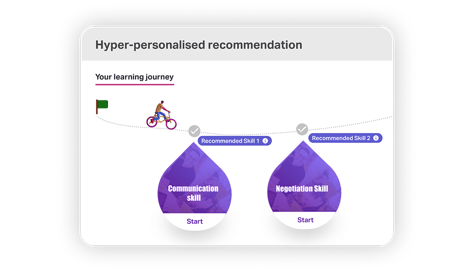
As per recent research conducted by Disprz, completions for self-enrolled courses were 82% as compared to 34% for assigned courses.
An LXP is a better fit for today’s modern learner
From Netflix to Amazon, modern apps use artificial intelligence to tailor the user experience to each individual. Learners today would like to have the same personalized experience as part of their learning process. Which is why an LXP is a perfect solution for employee development.
Let’s explore the capabilities of this modern solution:
Assess current skill level and discover trending skills
Upskilling and reskilling are crucial for building an agile workforce. However, it’s important to assess the current skill levels of employees and uncover trending skills.
Self-assessment through an LXP can help your employees in measuring their skill levels and identifying their skill gaps. Learning material is suggested by personalized recommendations driven by the LXP platform.
Moreover, the Disprz LXP allows you to determine and benchmark functional, leadership, and meta-skills for various roles. For instance, a customer service manager working in retail banking can get recommendations for multiple skills based on his job role and responsibilities.
Personalize learning with the power of AI
Most companies invest in a learning solution but fail to see a return on their investment. One of the core reasons is a lack of personalization.
However, this wouldn’t be an issue if they used an LXP. AI-based personalized learning paths are a key feature of learning experience platforms.
Studies show that 77% of learning and development professionals believe personalized learning is critical to employee engagement.
An LXP helps create a highly personalized learning journey. Moreover, its AI-led recommendations are based on the learner’s interests and job roles, which helps them stay on the right path to reach their goals.
Move beyond silos with social learning
Open the door to collaboration through social learning. Collaborative learning via a single learning platform allows employees to brainstorm, share ideas, learn together, and develop innovative solutions that can benefit their business.
For instance, if a new cold-calling strategy starts producing significant results, the sales professional can instantly share it with his teammates. Or perhaps the interest rates of an FD have changed; the manager can immediately put information up on the common platform and inform everybody in real-time.
Increase learner engagement with gamification
Gamification enhances levels of employee engagement and optimizes the learner experience. Through gamification in an LXP, you can have interactive sessions rather than boring lectures when only the facilitator is speaking.
90% of employees feel more productive while using gamification
Through quizzes, roulette wheels, and break-out rooms, you can make learning interesting and enjoyable for the employees. Plus, leaderboards and badges can help in striking healthy competition between employees. It can also work as a motivational factor to go the extra mile and upskill to improve performance.
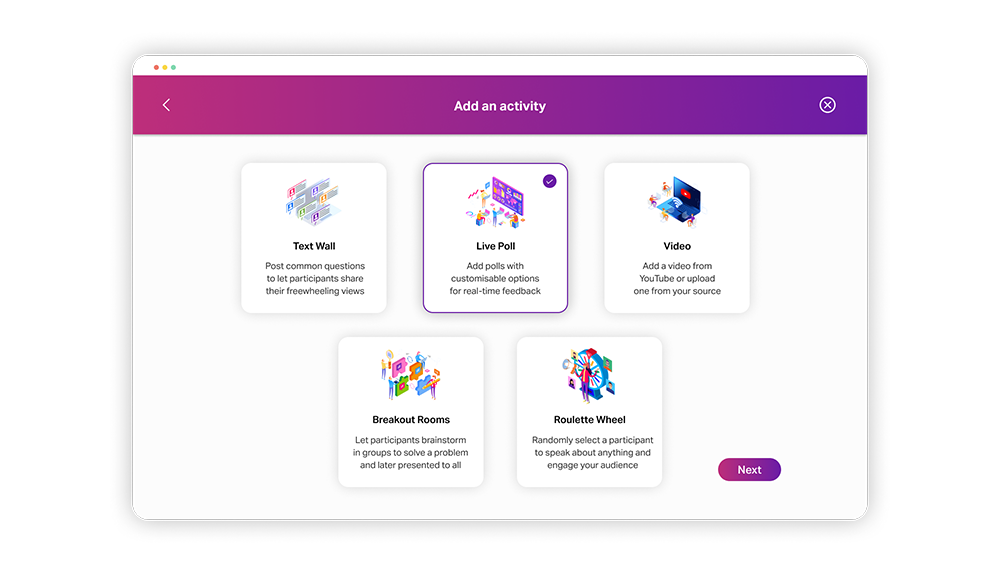
Increase adoption with a mobile-first experience
A mobile-friendly LXP can work wonders for employee learning and development. Be it a frontline or knowledge worker, mobile learning allows your employees to absorb new skills at any hour of the day. With a few minutes during a coffee break or while traveling to meet a client, employees can easily consume knowledge nuggets on the go.
Microlearning in a mobile LXP has helped embed learning in the flow of work. You can immediately update the workforce when a new product is launched, or a feature is upgraded.
And at Disprz, we’ve helped our clients realize these benefits firsthand. One leading pharmacy retail chain in India used microlearning to keep their staff up-to-date through bite-sized content, such as how to stock up on medicines or prescribe the right drugs.
Click here to read the full case study.
Upgrade your training content with an LXP
LMSs and LXPs are both useful tools many leading companies around the world use to help boost employee learning and development. LMSs organize baseline training lessons, while LXPs let people share things they've made themselves and choose what they want to learn.
In short, an LMS makes sure everyone knows the basics. On the flip side, an LXP takes it a step further and looks at what an employee already knows and helps them find materials that fit their skills.
While both platforms offer huge upside, upgrading your training content with an LXP boosts overall efficiency and adaptability in training and leads to better business outcomes.
And the Disprz LXP is the perfect modern learning solution tailored for today’s employees. From role-based benchmarking to AI-powered automation, Disprz has all the necessary features to empower your employees.
Request a demo today to explore a wide range of innovative upskilling solutions that Disprz learning experience platform has to offer for transformative learning experiences.



